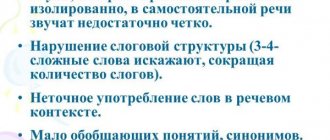The presented monograph is based on the practical experience of more than 20 years of studying the problem of written speech disorders. During the study, a wide range of clinical, experimental psychological, neuropsychological and electrophysiological technologies were used, which made it possible to get closer to solving the phenomenon of dyslexia.
Kornev Alexander Nikolaevich (born 1949, Leningrad) - a famous psychiatrist, speech pathologist, neuropsychologist, Doctor of Psychology, Candidate of Medical Sciences, vice-president of the Association of Logopathologists of St. Petersburg, author of more than 80 printed publications, including 8 books and educational -methodological manuals, developer of the theory of complex medical-psychological-pedagogical overcoming dyslexia.
Since 1983 A.N. Kornev studied the clinical, psychological and neurolinguistic mechanisms of oral speech underdevelopment in children. The results obtained during the research formed the basis of the book “Fundamentals of Logopathology in Children: Clinical and Psychological Aspects.” The material presented to the scientific community made it possible to lay the foundations of an innovative direction: “logopathology of childhood.”
The Association of Logopathologists of St. Petersburg was officially registered on December 23, 1991 and existed for about 18 years (TIN 7813924724; OGRN 1107800000660) at the address: Lev Tolstoy Street, building 6. The date of liquidation of the organization was 02/01/2010.
Psychology of the development of written speech
Russian writing is initially based on a number of essential principles. The main ones are the following:
- phonetic (a letter symbol corresponds to a strictly defined phoneme that is used in oral speech);
- morphological (stability of morphemes with the help of which a word is formed, a fairly stable element);
- traditional (the historical preservation of the word model is observed).
Writing Skill
The skill of writing has a close connection with oral speech, but at the same time it also has independent psychophysiological foundations that make it possible to directly realize the ability to write. The writing process itself consists of 3 sequential operations:
- symbolic designation of sound units;
- modeling the phonetic structure of a word using graphic signs;
- grapho-motor operations presented in the diagram below.
Functional structure of writing mechanisms
Reading process
Reading as a way of activity is:
1) the complex process of decoding the graphic (sign) model of a word into an oral language type;
2) an equally complex process of perceiving and understanding the meaning of written messages.
A.N. Kornev proposed an innovative model for the formation of the decoding operation, i.e., creating the phonetic appearance of a word using graphic modeling. The main importance here is played by the skill of syllable fusion. Thus, the reading process is:
- recognition of a letter symbol in its connection with sound;
- combining letters into a syllable (syllable merger);
- combining syllables into a word;
- integration of words into a complete semantic phrase.
The study of reading pathology allows specialists to conclude that the leading symptoms at the initial stage of learning to read (grades 1-2) are:
- the persistent problematic nature of the formation of sound-letter relationships;
- a complete lack of ability to formulate syllables or its significant impairment.
Alexander Nikolaevich Kornev , Doctor of Psychology, Head of the Department of Logopathology at the St. Petersburg State Pediatric Medical University of the Ministry of Health of Russia, author of the Slogy method, spoke about how children develop reading skills and why years of work are needed to overcome dyslexia. Alexander Nikolaevich’s report was made at the scientific and practical online conference “School Difficulties: Strategies for Helping Children,” which took place as part of the II International Awareness Week on Dyslexia and Other Learning Difficulties.
Many parents dream of a “magic pill” that would save their child from dyslexia. When working with parents, I often feel that they really want to get some kind of quick-acting remedy. The emergence of such desires is understandable. But it’s unlikely to justify them. The capabilities of our brain are, of course, gigantic, but they also have certain limits.
The paradox is that none of the same parents will believe it if they are offered a “miracle method” with the help of which a child will master the entire primary school course in six months. Everyone has long understood that education is a long process: first you have to study for four years in primary school, then continue in secondary school, and this is normal. But for some reason, when it comes to learning to read, and in the conditions of special difficulties that exist for children with dyslexia, such a dream is alive and well. And this is taken advantage of by clever marketers, and simply put, by scammers. This is exactly what they are speculating on, offering absolutely fantastic methods that no professional, of course, would ever believe in. But parents who don’t know much (and sometimes know nothing at all) about the mechanisms of learning skills are ready to believe it.
To explain why such miracles do not happen, let's start from afar. Let's start with how the process of mastering literacy normally occurs. This is a multi-stage process, which for Russian children, for example, begins in preschool age. Although no one has officially charged kindergartens with teaching children to read and write, this is happening nonetheless. Many parents take their children to early development centers; most kindergartens develop in children preliminary knowledge and skills, without which they cannot master literacy. This stage is called propaedeutic: the child, before learning letters, must first recognize language as a separate substance, distinct from the objective world.
While learning to read and write, a child masters a new system of signs, in fact, a new language - a graphic code of oral speech, which he already uses.
Therefore, to begin with, the child must understand, realize that the speech he uses every day is something special. However, up to a certain age (up to about 4 years), children consider a word to be a sign of an object and treat it that way. Some even ask questions such as: “How did you know that the Moon is called Luna? She’s so far from us.” Also Soviet psychologists S.N. Karpov and I.N. Kolobova, in experiments with renaming, were convinced that children 4.5–5 years old are indeed sure that a word is a sign denoting an object. And only later do children master the skills of isolating words from a stream of speech, dividing a word into segments - syllables and sounds. It is especially important that this process is competently supervised by specialists: then children easily understand that discrete individual units are sounds denoted by letters. That is, children are not taught to name letters (as parents sometimes do and thereby spoil the normal course of this process) - they are explained how letters can represent sounds. The only correct way is to go from the sound structure of the word, from sound to letter, but not vice versa. All this takes a lot of time. On average, the entire process of mastering the alphabet lasts from 6 to 12 months. And for children with problems, such as dyslexia, it lasts even longer - often a year or more. Often, already in grades 2–3, children with dyslexia still cannot fully master these skills.
Next, children move on to the alphabetic period - they begin to master sound-letter connections. This process is also slow - depending on the child’s abilities and the methodology, it lasts from six months to a year. The child needs this time in order to remember which letters represent certain sounds and to firmly grasp this (that is, to automate these connections).
Then the next stage begins (sometimes these stages partially overlap or proceed in parallel): the skill of syllable merging occurs. This is especially important in Russian writing. At the initial stage, the syllable is the basic unit in reading. Dividing a word into syllables is the simplest type of analysis, because a syllable, as is known, is the minimum pronunciation unit. But this stage also takes from a year to a year and a half. According to our longitudinal study, it is impossible to go from basic reading to reading whole words in less than a year.
And finally comes the long, long stage of mastering strategies for semantic text analysis. Scientists around the world, including our laboratory, have been studying the mechanisms for mastering this process for many years. It is actually a long journey, lasting 5-7 years after the end of primary school. Why is it so long? Why is this taking so long?
Data obtained by scientists studying the brain using neuroimaging methods have greatly changed our understanding of the functioning of the reading brain. It turned out that all the exercises that a child, while mastering literacy, performs under the guidance of teachers, a speech therapist, or even independently, ultimately create new systems of connections in the brain, new functional systems, new synapses, new pathways, dendrites. That is, in fact (and this is not just a metaphor) a teacher, a speech therapist, in some sense, is the architect of the development of brain support for reading. I would say the same about a neuropsychologist working with a patient with aphasia. The plasticity of the brain, its ability to restructure itself, for example, in the event of damage, thanks to rehabilitation exercises and neuropsychological methods of restoring functions, has been clearly confirmed by numerous observations and experiments. In other words, the entire time the child is practicing, trying to read, improving his skills, his brain is being rebuilt. After all, the fact is that nature has not created brain structures specifically designed for literacy, so we have to use those structures that are genetically designed to serve slightly different functions. That is, during training, they undergo a kind of reconfiguration, and there is a lot of evidence-based scientific data on this matter. Obviously, this is a very serious long-term work and the brain cannot do it instantly, so the process of mastering literacy is not quick. A perfect skill at the brain level is a collection of different neural networks, subsystems (interconnected neurons), located in different parts of the brain. These changes, alas, cannot be carried out instantly or in six months (and some even in a year).
There are general patterns that create certain time limits. Scientists, in particular N.A. Bernstein , have long proven that the assimilation of any skill (both motor and mental), as a rule, occurs in two stages: first it is formed under the control of consciousness, with great expenditure of energy and effort, and then gradually, with exercise, it occurs consolidation and automation. The final result of a fully formed skill is its automation. Most speech therapists know this as a law, mandatory for the formation of speech skills. Often, for children with problems, the automation stage can be delayed and proceed much more slowly than for everyone else.
In different types of writing, the processes of mastering literacy proceed slightly differently. For example, the stage of mastering the skills of syllabification for Russian writing is especially important (compared, for example, with English writing). Therefore, Western methods of developing reading are not directly applicable to Russian writing. Without knowing this, some parents of children with dyslexia hope for success from using Western methods. But such methods were created based on the laws of the English language and writing; they are unsuitable for Russian children. Even if the technique works well in the Western educational system (for example, in an English-speaking country), it cannot be applied to the Russian language. I have seen promising advertising claims that guarantee success from the use of English-language techniques. But in reality this is impossible.
All of the above stages in mastering writing and reading skills, of course, take time. And by magic, no matter how much the parents want it, it is impossible to speed up this process without compromising the result. If they still try to do this, then in the end the house, figuratively speaking, turns out to be built on sand: by forcing the process too much, you can get a raw, non-automated skill that has not been brought to full consolidation, which will then simply be lost. This is the most typical example of what teachers call pedagogical neglect. If the teacher does not control the strengthening and automation of the reading skill, if he speeds up the rate of complication of the material, a disaster occurs for some children.
Underdeveloped skills accumulate like a snowball, and in the end the child seems to hit a wall.
He cannot learn the next most difficult skill because the previous ones fell apart because they were not automated. In other words, we need a principle of automation control: on the one hand, psychological, and on the other, didactic.
Children with dyslexia have many difficulties associated with incomplete acquisition of certain prerequisite skills. There are many of them, but we can name three main difficulties that these children face. Firstly, the formation of sound-letter connections is too slow; True, this difficulty does not arise for everyone; it is characteristic of the dysphasic form of dyslexia, which I described in my book. But the next difficulty arises for all dyslexics: this is extremely slow progress in mastering syllable fusion, syllabic reading and, of course, reading whole words. This progress is so slow that some children, even by the end of school, cannot cope with syllable combinations. This is a truly difficult, time-consuming process, and this is a compelling reason to sympathize with such children. They spend several times more effort on mastering literacy than all other children. They are often accused of laziness, of negligence, but in fact, if, figuratively speaking, you try to get into the skin of such a child, it becomes obvious how difficult it is for him to drag this cart. Conducting an eye-tracking study, we saw firsthand how much more mental operations such children perform when they need to read a word or sentence.
Our research, carried out quite a long time ago, has allowed us to create a multifactorial model of the mechanisms of dyslexia, which includes many different deficient, immature cognitive prerequisites that inhibit the development of skills. According to many scientists in Russia and other countries, it is very difficult to eliminate dyslexia; many believe that it is completely impossible to achieve this. In such children, some areas of the brain are not actively involved in the reading process. Areas of high activity of brain structures that are normally involved in the act of reading are much less involved in this process in children with dyslexia. In order to activate them, to create the necessary brain subsystems, numerous exercises that are repeated and continued for quite a long time are needed.
That is why scientists around the world are looking not only for methods of helping in traditional learning conditions, but are also making attempts to create alternative methods that would spare the weak functions of children with dyslexia, relying on more intact ones. For example, such alternative methods include global or semi-global methods.
We made a similar attempt many years ago. At first it was a candidate's dissertation, which attempted to study the mechanisms of dyslexia themselves. This then led to the creation of an alternative method of teaching reading that allowed children to bypass the most difficult component for them, that is, the skill of syllable fusion, and learn the entire syllable. To do this, a non-traditional approach is used - what is called implicit (or involuntary) acquisition. Research has shown that implicit learning is more intact in children - it is like a reserve resource that does not require conscious learning (which is especially difficult for such children). This technique has been tested for many years and applied to children with various forms of pathologies, not only to children with dyslexia, but also to children with mental retardation and speech underdevelopment.
On this basis, a digital version was developed, which is already online and available to everyone. It allows, on the basis of regular daily exercises (which are needed to enlarge reading units and automate them), to form reading skills in children with severe reading disabilities. Repeating exercises regularly, without leaving home, creates a very convenient opportunity to teach a child to read.
The program we created, among other things, also automatically individualizes the pace of introducing new material and the level of difficulty for each specific child. As a result, it is possible to do the most important thing (which, in fact, is a weak point for such children) - gradually gradually form and enlarge operational reading units. The technique allows you to form the most important prerequisites for reading: expand the amount of RAM for letters and syllables, form and develop skills in synthesizing words from phonological segments (for example, syllables), and syllable analysis skills. In addition, the program forms the most important prerequisite for reading and writing - short-term successive auditory-verbal memory (that is, memory for sequences, for rows). This function is actively used in all speech-related skills. Finally, visual attention and visual search are trained - and this is also the most important function that is always in demand in reading (similar exercises are even used in teaching speed reading to adults). In other words, this whole complex allows you to gradually achieve success. Experience shows that to achieve full results, a year or two is needed - this is the least, and in serious cases of dyslexia, sometimes it takes three or even four years. But as a result, it is really possible to achieve quite lasting results.
The ideal option is a combination of using the technique and simultaneously working with a speech therapist.
I cannot fail to mention how important it is also for parents to motivate the child, help support him, maintain enthusiasm, optimism, and psychologically support him.
Thus, the overall result is complex teamwork.
And returning to the question, are there methods that quickly get rid of dyslexia. Unfortunately, this cannot be answered positively. When some companies or individual specialists offer to change everything in a few months, to arrange everything so that the child will read, behind this lies a deception. So I appeal to parents: be careful. If you are promised quick success, then most likely this is a marketing trap. You will waste time, a lot of money, and ultimately the child will be the loser. Think about it, weigh everything I said. I believe that speech therapists, in turn, should help parents not fall into such a trap, explaining that it is impossible to fix everything so quickly, which means it is a deception. Any promises of fantastically fast results are actually fraud, for which, unfortunately, there are no penalties yet.
Overcoming a defect
Corrective measures are developed individually and depend on the student’s level of written language proficiency.
Work is being carried out to consolidate sound-letter connections, to form and consolidate the skill of syllable merging, and to develop verbal and logical perception of a test message. Particular attention is paid to correct sound pronunciation, the development of phonemic analysis and synthesis, spatial analytical activity and the development of intelligence.
The selection of specific correction methods depends on the form of dysgraphia and dyslexia.
(Based on the book by A. N. Kornev, Reading and Writing Disorders in Children)
What is dyslexia in children
With dyslexia, children have trouble reading. There are several types of defect:
- phonemic form - characterized by the replacement and mixing of similar sounds: voiced with voiceless and vice versa. Possible slow spelling, distortion of words - omission, rearrangement, adding extra sound;
- semantic type - manifested by a lack of reading comprehension. At the same time, the child reads syllables and words correctly;
- agrammatic dyslexia - the child incorrectly reads the endings of words, using the wrong cases, gender and numbers. Similar errors are present in both conversation and writing;
- mnestic form - the visual perception of letters and its relationship with the acoustic image are impaired. The preschooler does not remember letters and their pronunciation;
- the optical form of the defect is accompanied by the replacement and mixing of letters that are graphically similar. A student can start reading one line and jump to another, or he reads in the opposite direction, that is, from right to left;
- tactile dyslexia properties for people with poor or no vision. When reading Braille (for the blind), they mix letters that have similar tactile sensations. They may also jump from one line to another, skip letters, syllables and words, and fail to grasp the meaning of what they read.
In children, this defect manifests itself as problems in learning speech, letters and sounds, inconsistency between oral speech and writing, difficulties in memorizing numbers, and difficulty in learning a foreign language. And also - fast reading, when due to high speed there is no understanding of what is read.
Signs of the disease also include difficulty counting; remembering the sequence of letters in the alphabet, days of the week; selecting rhymes for words; selection of words starting with the same letter; problems with remembering people, places, and spoken language. Oral speech is incoherent and lacks complex sentences.
Game methods for correcting dyslexia in children
Games are an essential element of helping with dyslexia. Below we describe the most popular games:
- Find words with the same root in the list, and the words must denote the same action, object or sign: walking, walking, leaving, walking;
- Search for words by given sound. Develops hearing;
- You need to prepare cards with words or letters: make them yourself or purchase a ready-made set. Next, the student must find a card with a word that the teacher calls. Another option is to select a rhyme for a given word, naming words with a specific letter;
- Drummer - pronounce words syllable by syllable, for each syllable we clap our hands or beat the drum.
Determination of the working length of the root canal
Determining the working length of the root canal can be considered a key point in endodontic treatment. Being an integral stage, it does not take much time, however, it should not be neglected.
The working length can be defined as the distance between a conventional point on the tooth crown (for example, any preserved cusp), which we remember throughout the treatment, and the physiological apex.
There is a difference between certain types of constrictions in the apical third that must be remembered.
Physiological narrowing is the point of transition between endodont and periodontium; the walls of the canal in this place are made of cement.
Anatomical apex is the anatomical tip of the tooth root.
X-ray apex – image of the anatomical apex on the Rh-gram.
Methods for determining the working length of the canal include the use of an apex locator, X-ray, tactile, tabular, paper pins and the sensitivity method.
Apex locator
It is impossible to imagine modern endodontics without an apex locator. Its action is based on determining the location of the enamel-dentin border. The hard tissues of the tooth and the mucous membrane have different resistance indicators (higher for hard tissues). When the instrument is inserted into the canal, the resistance on the metal part of the mouthpiece increases sharply. An open electrical circuit is created. When the constriction is reached, the circuit closes.
Modern apex locators work equally well in dry or wet canals. The method has an accuracy of 90% or more, provided that the canal is not blocked by sawdust from infected dentin.
Tabular method for determining working length
The tabular method for determining the working length is based on the use of the average long-studied lengths of the root canals of each tooth. But no one has canceled the individual parameters of each person.
X-ray method
The radiographic method is suitable for filling the canal up to the radiographic apex. On the plus side, the method is objective; in most cases, it is easy to recognize the top with a correctly taken picture. The disadvantages are that the structures may overlap each other in the image, there is a high probability of poor visualization of curved canals, difficulties in performing in some patients (increased gag reflex, radiation exposure).
Paper point method
The paper pin method is based on moistening the tip of the pin while bringing it to the top. It can be wetted with blood, serum, pus.
Tactile method
The tactile method is the determination of the working length of the canal based on one’s tactile sensations. The result depends on the doctor’s experience, since the technique is complex and is not effective if the apex is unformed.
The patient's pain can also help in determining the working length at the moment the instrument penetrates the apex and comes into contact with the tissues of the apical periodontium.
After determining the working length, preparation or mechanical treatment of the root canal begins. Today, many methods have been invented, each of them has a specific purpose, and also has advantages and disadvantages. To understand the specifics of creating a root canal shape and subsequent filling, you should start with the basic techniques.
Step Down technique
Stage 1 – preliminary assessment of working length
The instrument is not inserted to the top. The radiograph determines the number of root canals, their curvature and estimated length.
Stage 2 – expansion of the mouth, formation of the upper and middle third of the canal, creating access to the apical third
A thin K-file (No. 8 or 10) is inserted into the root canal 4-5 mm or until the beginning of the curvature. Processing of this part of the canal begins with K or H-files, thus not reaching the apex. The stage is completed by using Gates Glidden from 1 to 3 numbers, inserting it into the canal only 1-2 mm.
Stage 3 – passing the apical part and determining the length of the root canal
They pass with a K-rimmer until it jams and determine the working length as in the “step back” technique.
Stage 4 – treatment of the apical third with an instrument and formation of the apical stop
The treatment is carried out in the same way as in the Step back technique. The channel takes the shape of a cone.
Stage 5 – final alignment of the walls
The final alignment is carried out with the same instrument used for processing the apical third of the canal.






